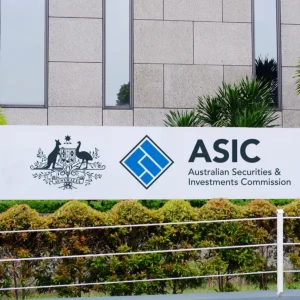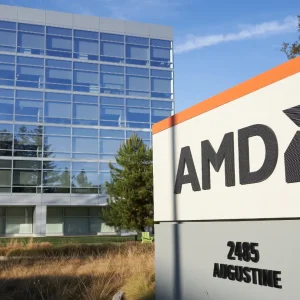
The data centre industry has continued to see large levels of growth over the past few years, with an expected growth in hyperscale data centres expected to account for 53 percent of total traffic by 2020.
Despite this growth, a number of service providers and enterprises have been faced with a number of challenges caused by emerging trends.
Trends such as the rise of advanced technologies in the form of connected devices, application containers, and bare-metal servers have contributed to the development of services that must meet with business expectations.
Businesses now are expected to support an increasingly mobile workforce which produce and consume vast amounts of data. Thanks to trends such as these there is an increasing demand for data centres at the network edge.
Trends such as an increase in cloud adoption and the increased use of containers are two industry trends that are forcing data centre providers to change their strategies, while the growing pressure to create green data centres pushes them to deliver a more modular approach.
Read more: Containers vs Virtualisation: Red Hat, Docker & AWS take on VMware, Microsoft & Oracle
CBR looks at the biggest trends hitting the data centre market.
Containers
Research conducted by 451 Research found that 2017 is to see a growing use of container technology, with revenue produced by the adoption of containers expected to hit $1,107bn.
This growth in containerisation can be linked with the benefits it can bring for DevOps; for businesses it is seen as a very practical way to develop a DevOps strategy, which should lead to software being released more efficiently and frequently.
Containerised systems are noticeably more efficient for providers as they begin to be made aware that they can be used as part of their overall data centre infrastructure.
While the adoption of container technology is one factor noticed in the data centre industry, the rise in service providers offering more modular equipment is another.
As multiple containers can be deployed on an operating system, they are deployed separately from other containers, which mean information will be sent separately. This explains the growth of container adoption in the data centre as it enables a faster flowing and easy delivery of information.
Service providers such as data centre owners with newer, more modular equipment and designs that allow increased flexibility and faster provisioning could be some of the potential winners in the market as they are seen to provide skills of being able to add power and cooling quickly in a modular way.
How is cloud impacting data centres – continue reading to find out
Cloud
Susan Bowen, Vice President & General Manger, EMEA, Cogeco Peer 1 said: “Whilst the benefits of cloud computing to business remain compelling, organisations want to still have their sense of ownership and control- they want a private, single tenancy cloud.
“We’re seeing that businesses want to know where their data is, but also be able to scale into the public cloud as and when they need to.”
The move to cloud has had a dramatic impact on the role that data centre providers have, as they have had to adjust their strategies in order to compete in a market with hyperscale offerings, such as Google, Amazon and Microsoft.
 The rise of these hyperscale providers has led to the increase of a multi cloud strategy. Gartner found that most organisations already use a combination of cloud services from different cloud providers across private and public clouds.
The rise of these hyperscale providers has led to the increase of a multi cloud strategy. Gartner found that most organisations already use a combination of cloud services from different cloud providers across private and public clouds.
Gartner’s 2016 research found that while the use of public cloud continues to increase, the use of private and hosted private cloud services is also expected to increase through 2017.
Cisco forecasts that 68 percent of cloud workloads will be hosted in public cloud data centres by 2020 and 32 percent to be in private cloud data centres, showing a significant rise in figures through 2017 alone.
“The increased use of multiple public cloud providers, plus growth in various types of private cloud services, will create a multicloud environment in most enterprises and a need to coordinate cloud usage using hybrid scenarios” said Gartner.
451 Research analysts, Penny Jones said the consolidation and M&A activity across Europe is to result in a potential ‘head to head’ of winners and losers.
Jones said: “While careful consideration should be given to risk, many providers find themselves in a race to the top. The number of buyers is also on the rise, providing opportunities for service providers or colocation operators seeking avenues for exit.”
According to 451 Research, winners in the race will be the differentiated players that want to remain competitive when changing the landscape.
Whereas, losers are classed as Multi-tenant Data Centres (MTDC), hosting and cloud providers that do not understand the need to adhere to customers’ change in requirements.
This means that in order to compete with larger providers, customer requirements need to be met to avoid the potential threat that may arise.
Renewable energy
A recent paper by The Green Grid issued guidance that smaller data centre providers should follow in the footsteps of large hyperscalers by increasing the adoption of renewable energy.
Following recent advice issued by The Green Grid, smaller data centre providers are requested to follow the footsteps of large hyperscalers in adopting requirements, such as renewable energy.
Customer Services Director of The Green Grid, Roel Castelein argued that a take on more innovative approaches to renewable energy would be essential in reducing carbon emissions across the data centre industry.
Castelein said: “Data centre operators have already placed large emphasis on using natural resources to cool IT infrastructure such as free air cooling, and this same mind-set should exist when considering how the data centre should be powered.”
A growth in demand from businesses that are looking to use only green energy is playing a role in forcing data centre providers to turn green themselves.
For smaller data centre providers this presents an opportunity. The opportunity is presented because, in theory, it should be significantly easier to transform a smaller fleet of data centres into green ones than it is to transform a global offering.
 Despite the rise of other trends that are set to boost the innovation within the data centre, energy should not be forgotten as a key challenge for data centre operators.
Despite the rise of other trends that are set to boost the innovation within the data centre, energy should not be forgotten as a key challenge for data centre operators.
Jocelyn Paulley, Director at Gowling WLG said: “The world’s climate change agenda requires large consumers of energy to play their part in minimising or off-setting their usage.
“This area is prime for further legislation, especially given the amount of innovation in renewable energy we are seeing and the cost advantage that anyone offering cheaper, yet reliable, power could enjoy.”
Overall, trends within the data centre industry are expected to move towards the deployment of advanced technologies, with the adoption of cloud and renewable energy to pave the way for modular data centres.






